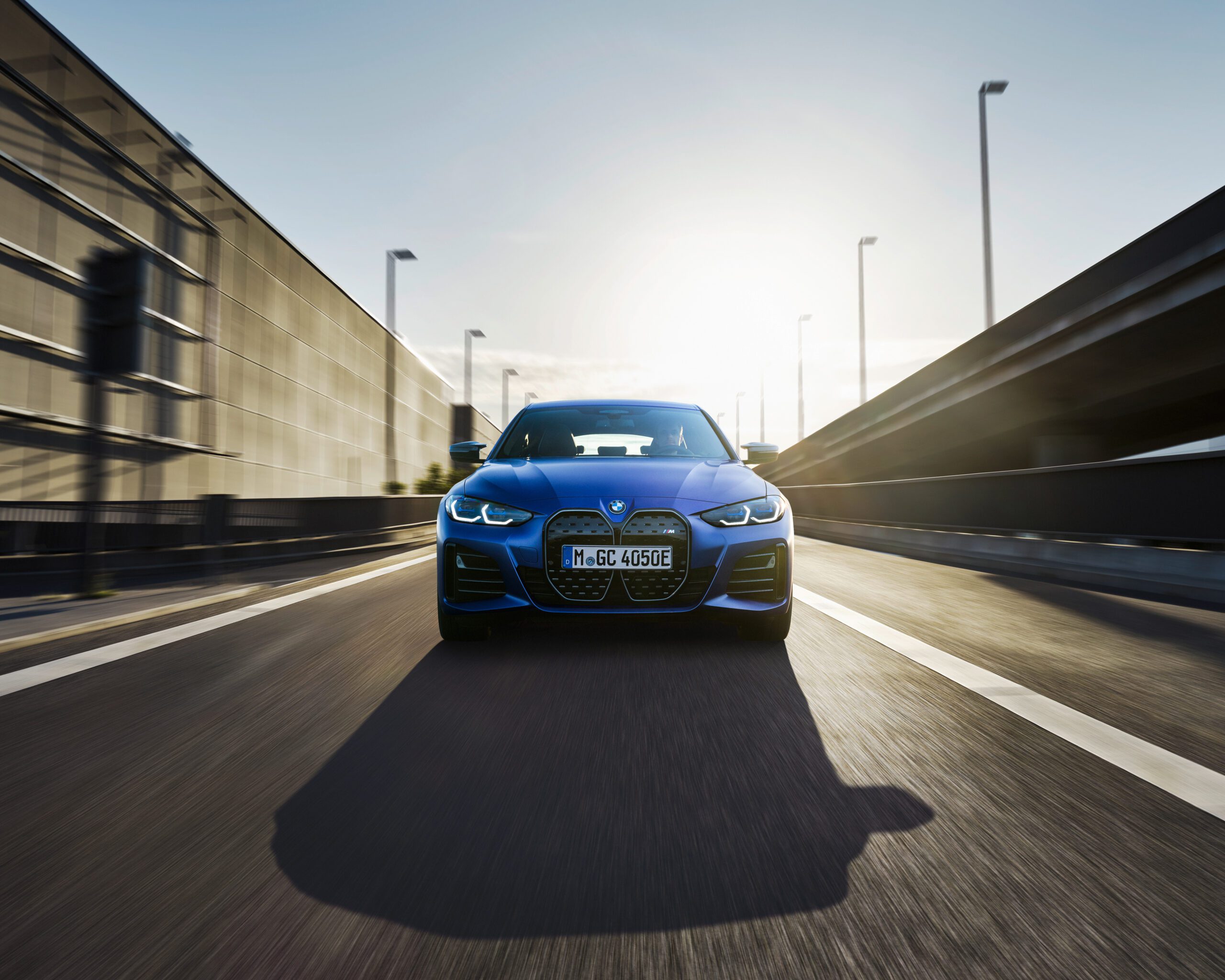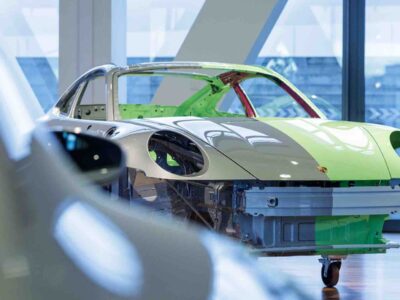As of this year, BMW is reinventing its promising electrification initiative. With the discontinuation of its two inaugural electric models, the quirky i3 compact car and the groundbreaking i8 sports coupe, the attention now falls to its electric hatchback iX and sportier i4 to continue the i-Series lineup. While the iX can be seen as a more aggressive and techy take on BMW’s electric future, the i4 has a more obvious connection to BMW’s current lineup, with plenty of similarities to its 4-Series sister model.
The car’s exterior is nearly identical to its internal combustion counterpart, with only a few key features setting the two apart. The car’s oversized double-kidney design forgoes a grille’s traditional duties like air intake and natural cooling. Instead, it’s used as a clever way to house the vehicle’s myriad of sensors. The two air intake valves on the front were also nixed, instead opting for slick vent coverings that act more as an aerodynamic feature than anything engine-related. The rear is devoid of exhaust pipes, replacing them with sporty aerodynamic diffusers. Coupled with the car’s coupe silhouette and door handles, the vehicle achieves a slick drag coefficient of 0.24.
The similarities between the i4 and its internal combustion sibling don’t stop with aesthetics. BMW’s two cars are built on the same CLAR modular platform for all current models. However, this generation of electric vehicles will be the last on this platform. In 2025, BMW will launch a new class of electric cars on its modular electric Neue Klasse platform (German for “New Class”). It will be the standard for all BMW electric vehicles from 2025 onward. Still, the i4 has another three years before it switches to the new platform.
Available in a single-motor RWD powertrain, known as the eDrive40, and a dual-motor AWD M-Series performance model, called the i4 M50, the i4 offers plenty of performance specs to rival its 4-Series sister model. On its own, the single-engine eDrive40 model delivers 335 horsepower and 319 lb-ft of torque, but the second motor on the M50 edition brings its total up to 536 horsepower and 586 lb-ft torque. It beats out the fastest internal combustion version, the M4 Competition model.
The i4 also offers acceleration in spades. BMW claims that the i4 M50 does 0–60mph in 3.9 seconds, which is already startlingly fast, but independent tests from both MotorTrend and Car and Driver clocked 0–60mph times that were much faster.
VIDEO: Pure Driving Dynamics | The BMW i4 M50 at the Salzburgring
The i4 also offers plenty of range, with the eDrive40 lasting up to 300 miles. The M50 version does sacrifice range for performance, topping out at 275 miles. Both models offer regenerative braking to extend the range even further. However, the car’s 200kW quick charging capability can recharge between 88–108 miles of battery range in just 10 minutes.
In addition, the i4 is loaded with lots of driver assistance features to ensure safety for both the driver and others on the road, including emergency braking and collision warnings, lane keeping and blind spot monitoring, and adaptive cruise control tech with stop-and-go technology.
In typical BMW fashion, the car’s interior mixes driver-centric amenities and luxury. The spacious five-seat interior comes standard with beautiful leather upholstery and wood trim. However, the most noticeable feature is the curved panoramic-style infotainment dashboard. The enormous touchscreen stretches from the driver’s side past the midline of the cabin. A knob and a few buttons quickly pull up features like maps, media, and phones to improve navigation. In addition, the drivers’ side also features an integrated heads-up display that shows essential information such as map directions, speed, and road signs.
The BMW i4 starts at $56,395. The second-generation electric vehicle in BMW’s i-Series is bridging the gap between the current lineup while demonstrating forward-thinking design and technology. This generation is a sign of exciting things to come.





